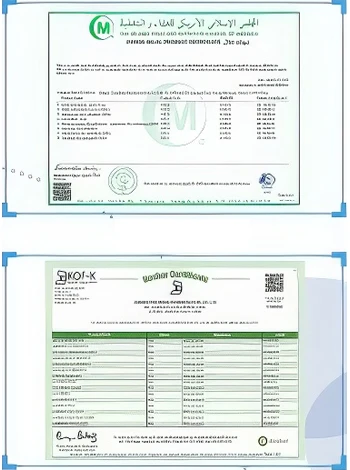



Safety Data Sheet for 20 Percent Sodium Hydroxide Chemical Handling and Storage Guidelines
Understanding 20% Sodium Hydroxide SDS Safety and Handling
Sodium hydroxide, commonly referred to as lye or caustic soda, is a highly versatile chemical that is widely used in various industrial and laboratory applications, including manufacturing, cleaning, and pH regulation. The 20% sodium hydroxide solution is particularly significant due to its strong alkaline properties and effectiveness in numerous chemical processes. However, safety is paramount when working with this compound, hence the importance of the Safety Data Sheet (SDS).
What is a Safety Data Sheet (SDS)?
A Safety Data Sheet (SDS) provides detailed information about a chemical's hazards, handling practices, and emergency measures. An SDS is an essential resource for anyone who may come into contact with chemical substances, ensuring they understand the risks and safety protocols. For 20% sodium hydroxide, the SDS covers numerous critical sections, including identification, hazard identification, composition, first-aid measures, fire-fighting measures, and exposure controls.
Hazard Identification
20% sodium hydroxide is classified as a corrosive substance that can cause severe damage to skin, eyes, and respiratory tract upon contact. Its strong alkaline nature means that it can react violently with acids and certain organic materials, posing a risk of fire and explosion in some conditions. The SDS will typically categorize these risks and highlight appropriate precautionary measures, such as the necessity of wearing personal protective equipment (PPE) – gloves, goggles, and face shields when handling.
Exposure and Health Risks
Exposure to sodium hydroxide can happen through inhalation, skin contact, or ingestion. Inhalation of aerosols or mists can lead to respiratory issues, while skin contact can cause burns or irritation. Eye contact poses significant hazards, potentially leading to permanent damage or blindness. The SDS provides guidance on the symptoms of exposure, emphasizing the importance of immediate medical attention in the event of contact.
20 sodium hydroxide sds

First-Aid Measures
In the event of exposure, the first-aid measures outlined in the SDS must be promptly followed. For skin contact, immediately remove contaminated clothing and rinse the affected area with water for at least 15 minutes. In cases of eye contact, flushing the eyes with copious amounts of water is critical, and medical attention should be sought urgently. For inhalation, moving to an area with fresh air is paramount, and if symptoms persist, professional medical help should be contacted.
Handling and Storage
The SDS for 20% sodium hydroxide stipulates strict guidelines for the safe handling and storage of the chemical. It is essential to use this solution in a well-ventilated area, preferably within a fume hood, to minimize inhalation risks. Storage should be in a cool, dry place, away from incompatible materials such as acids, metals, and organic solvents. Containers must be clearly labeled, and regular inspections should be conducted to ensure there are no leaks or signs of corrosion.
Disposal Considerations
Disposing of 20% sodium hydroxide must be conducted in accordance with local regulations. The SDS outlines the proper disposal methods to prevent environmental contamination and harm to human health. Neutralization of the solution before disposal is often recommended, ensuring that it is rendered safe for discharge into wastewater systems.
Conclusion
When working with 20% sodium hydroxide, awareness of safety protocols is crucial to ensure a safe working environment. The Safety Data Sheet serves as an important document that presents vital information on hazards, first-aid responses, handling, and disposal methods. By adhering to the guidelines outlined, individuals can mitigate risks associated with this powerful chemical and handle it responsibly. Safety in chemical handling not only protects individuals but also upholds standards for community health and environmental preservation.
-
Why Sodium Persulfate Is Everywhere NowNewsJul.07,2025
-
Why Polyacrylamide Is in High DemandNewsJul.07,2025
-
Understanding Paint Chemicals and Their ApplicationsNewsJul.07,2025
-
Smart Use Of Mining ChemicalsNewsJul.07,2025
-
Practical Uses of Potassium MonopersulfateNewsJul.07,2025
-
Agrochemicals In Real FarmingNewsJul.07,2025
-
Sodium Chlorite Hot UsesNewsJul.01,2025










